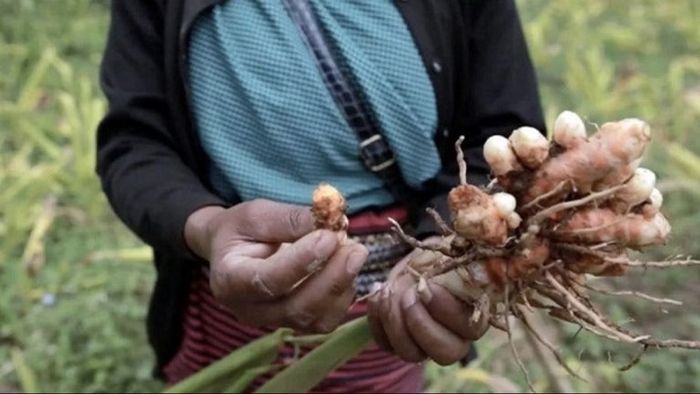Meghalaya's Lakadong turmeric gets GI tag
Meghalaya's Lakadong turmeric has been awarded the Geographical Indication (GI) tag, state Agriculture Minister Ampareen Lyngdoh has said.

- Dec 06, 2023,
- Updated Dec 06, 2023, 8:16 AM IST
Meghalaya's Lakadong turmeric has been awarded the Geographical Indication (GI) tag, state Agriculture Minister Ampareen Lyngdoh has said.
Along with Lakadong turmeric, Garo Dakmanda (traditional dress), Larnai pottery and Garo Chubitchi (alcoholic beverage) were also awarded the GI tag, she said.
Lyngdoh said the Lakadong turmeric, which is found in the Lakadong area of Jaintia Hills, has high curcumin content and the GI tag will help farmers in marketing and give access to customers to the authentic product.
"We are pleased to announce that GI has been awarded to Lakadong turmeric," the minister told PTI. She thanked the stakeholders who took the initiative to get the GI tag.
Lakadong turmeric is considered to be one of the world's best varieties of turmeric, with a curcumin content of around 6.8 to 7.5 per cent. It is darker in colour and is grown organically without the use of fertilisers.
Also Read: Meghalaya: Bid to smuggle sugar to Bangladesh foiled in East Jaintia Hills, one held
Around 14,000 farmers from 43 villages of the Lakadong area are currently engaged in cultivating the turmeric variety on 1,753 hectares of land. Lyngdoh said the GI tag will provide the farmers with a unique selling point and they will fetch a good market price.
Lakadong farmer Trinity Saioo, who was awarded the Padma Shri in 2021 for encouraging more farmers in the state to take up cultivation of the turmeric variety, expressed happiness and gratitude to Chief Minister Conrad K Sangma for promoting the spice. "I am very happy that Lakadong turmeric has received the GI tag. It is a blessing for the people of Jaintia Hills," she said.
It will boost the competitiveness of Lakadong farmers in domestic and international markets and create more livelihood opportunities, she added. Dakmanda is a handwoven ankle-length lower garment which is part of the traditional attire of Garo women of Meghalaya.
Chubitchi is a rice-based fermented drink of the Garo community consumed during feasts and ceremonies. Larnai pottery is made of black clay from Larnai village and the art form has been passed down through generations.